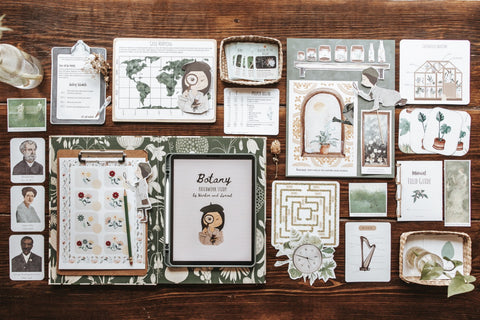
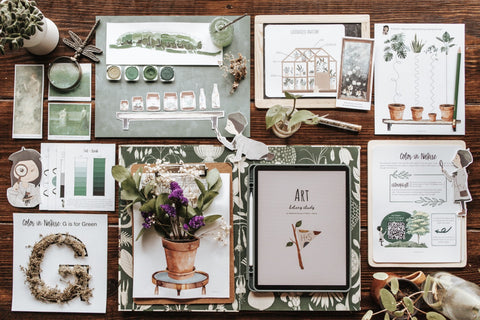
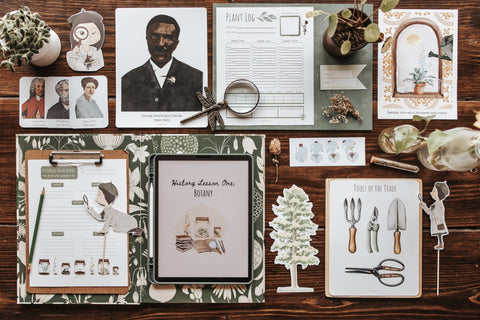
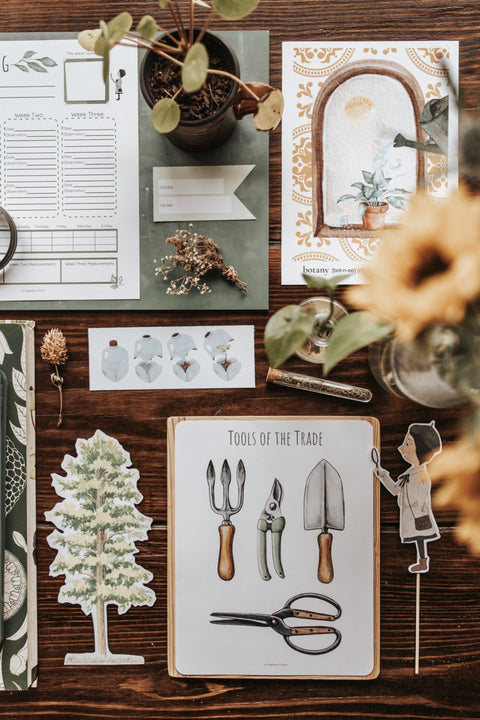
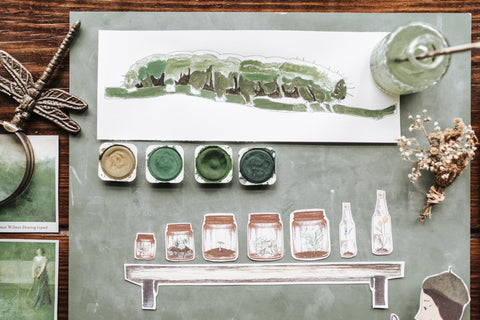
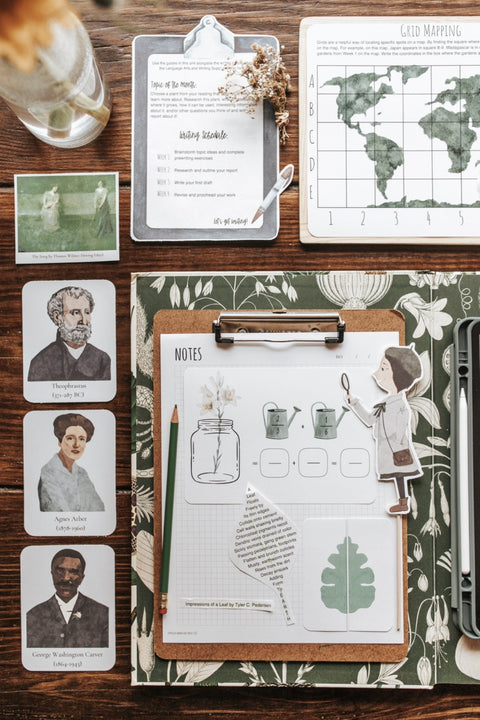
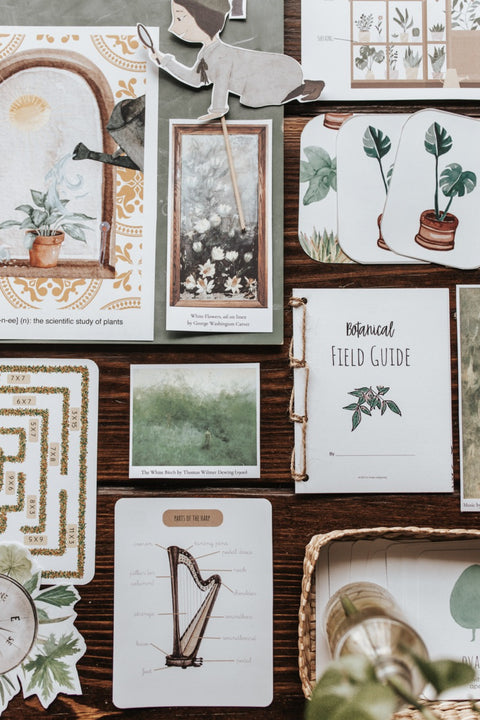

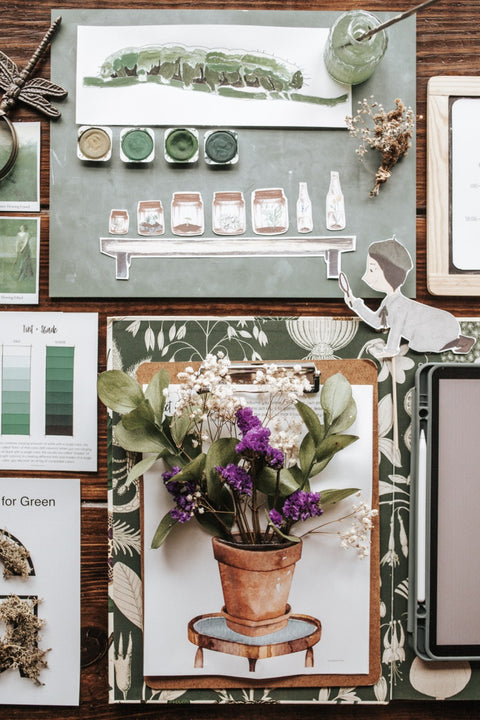
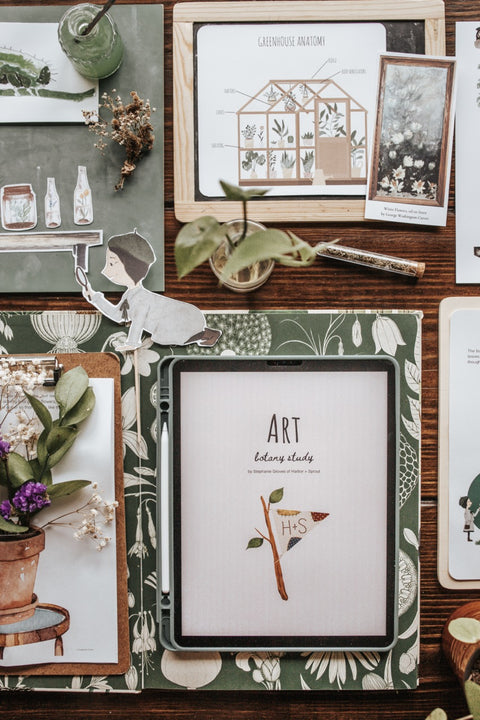
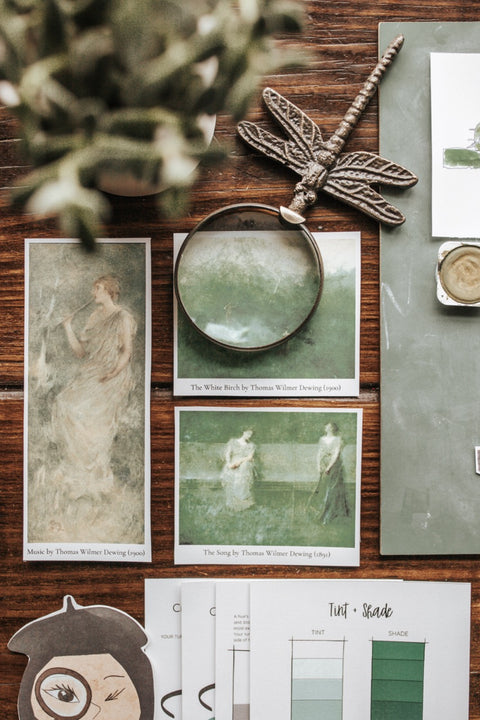
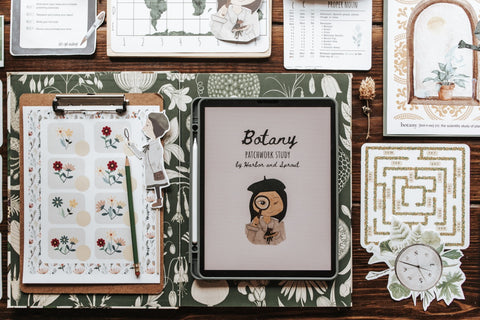
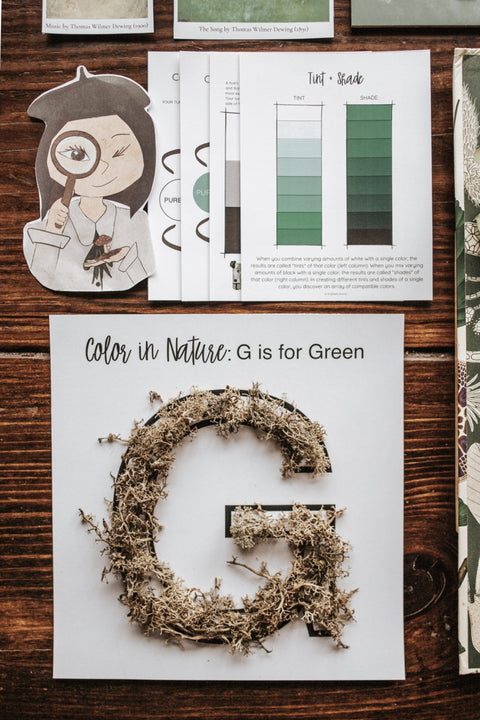
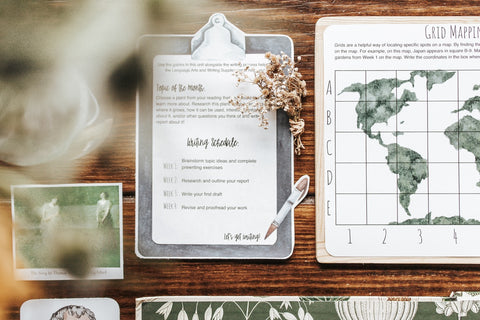
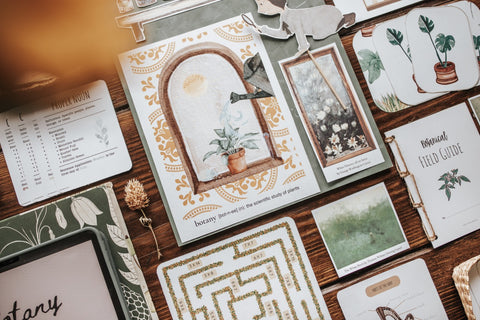

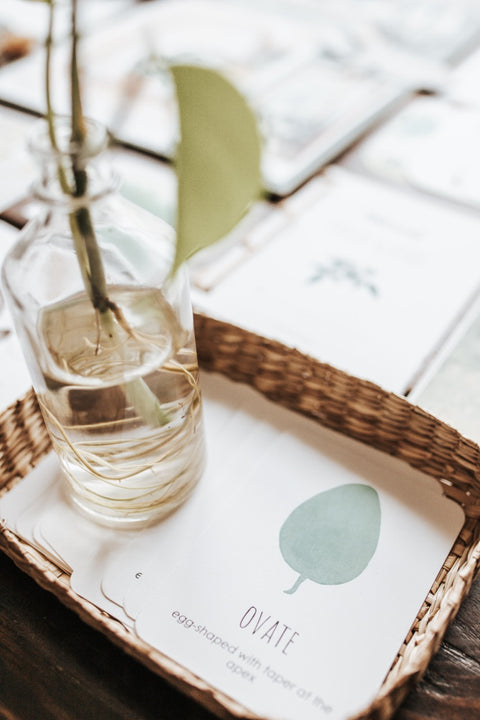
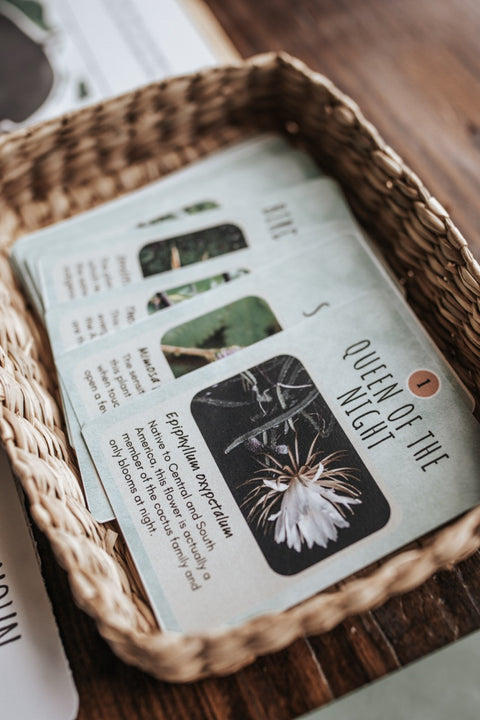
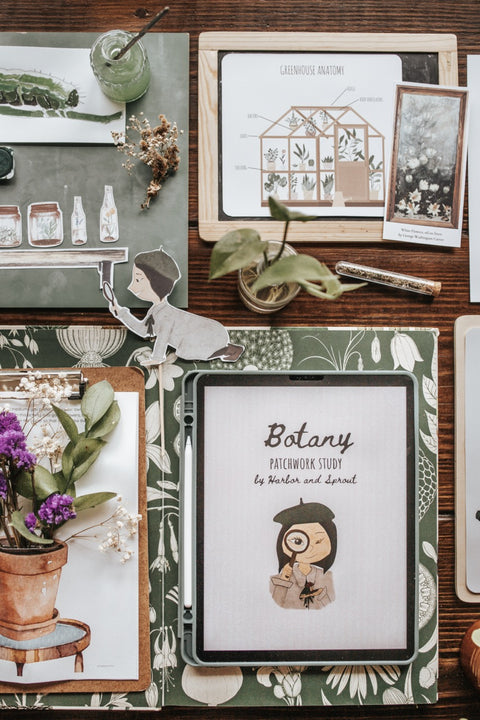
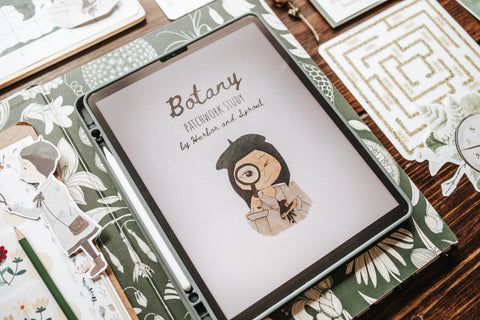
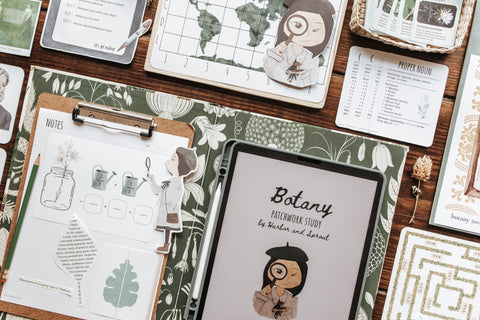
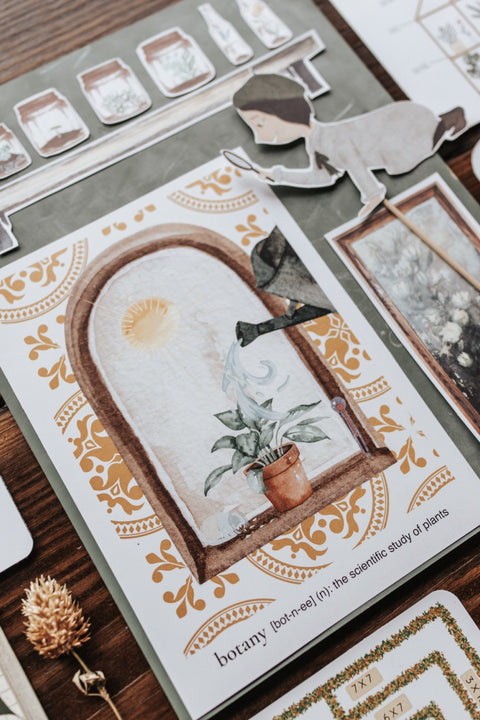
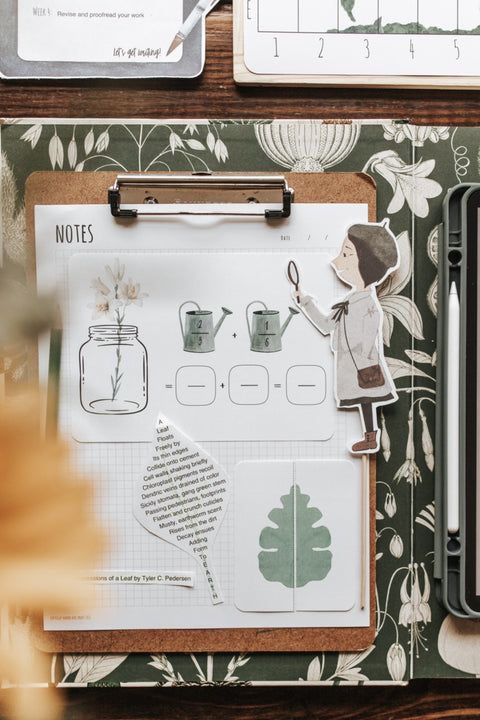
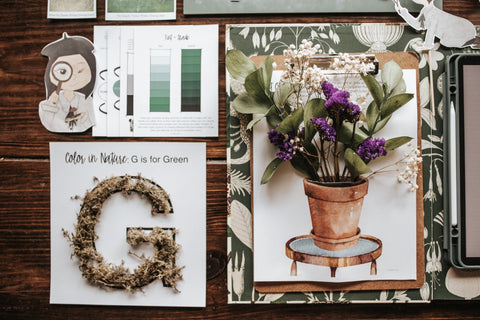
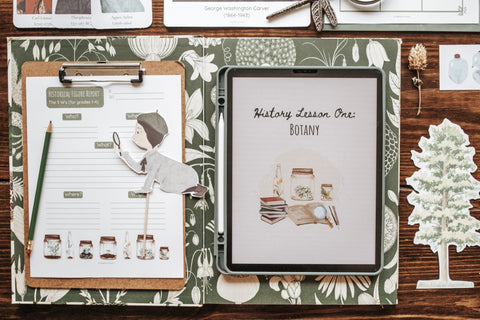
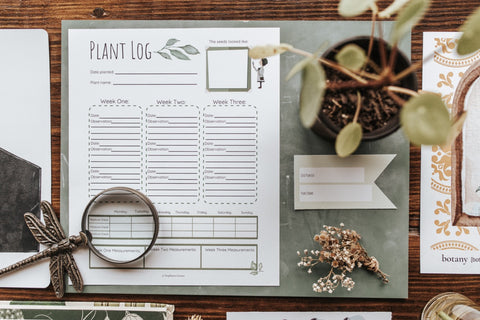
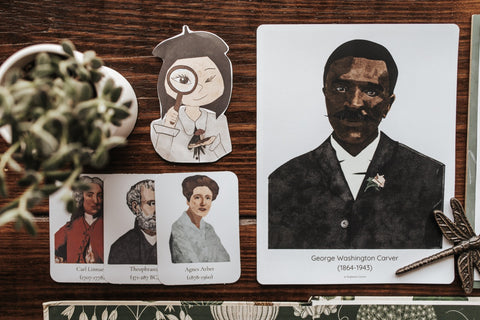
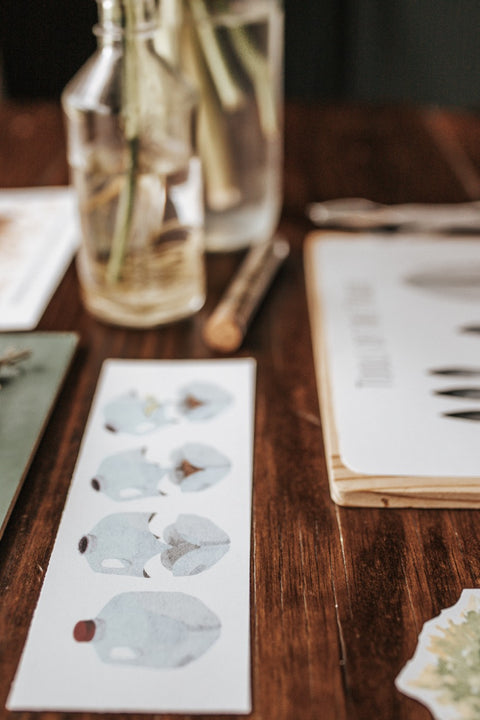
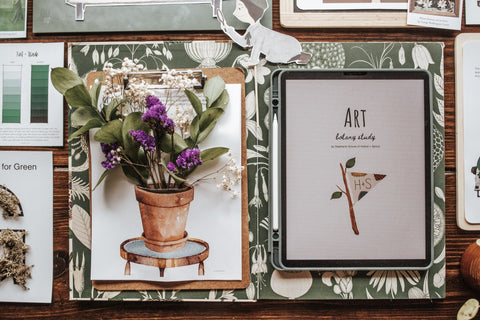
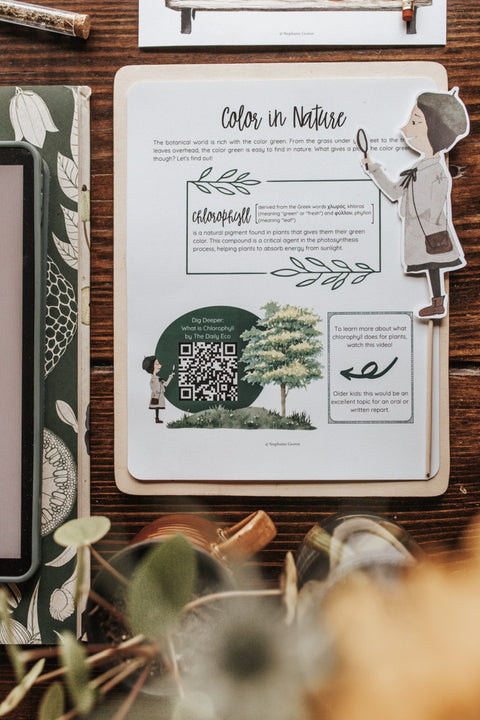

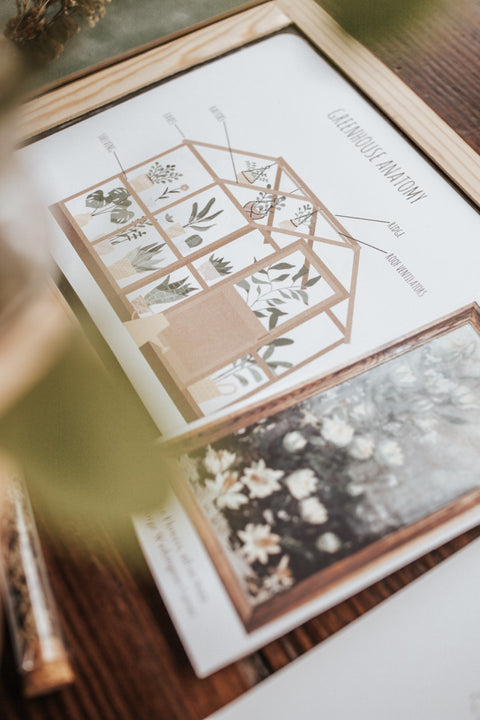
Harbor and Sprout
Botany Patchwork Study
Welcome to the Harbor + Sprout Botany Patchwork Study, originally released in July 2021 and updated May 2024. This unit study features 4 weeks of lesson plans and materials covering all 9 of our core subjects plus a playful supplemental section of thematic activities. This unit study is meant for use by children ages 3-12.
This unit is delivered via a secure link as a digital download.
CONTENT:
Handbook
Daily, weekly, and monthly planning pages
Book list including stories, poems, and field guides with recommended ages, subject correspondence, and brief summaries for each title
Lesson plans for 4 levels of learning
Family read aloud with discussion guide and recipe
Character kit- new monthly character illustrated by Stephanie Groves
Science
Lesson 1: What is Botany? In this lesson, you will explore the science of naming, describing, and classifying all kinds of plants and other organisms based on defining characteristics. You will discover how plants thrive and survive.
Lesson 2: What's a Primary Producer? In this lesson, you will explore the science of plant cells and their functions. You will learn about how plants produce the oxygen we breathe and how water moves through plants and into our air.
Lesson 3: How do Plants Reproduce? In this lesson, you will explore the various ways plants reproduce. You will learn about pollination, germination, spores, and the anatomy of flowering plants.
Lesson 4: What's a Plant Adaptation? In this lesson, you will explore the benefits and challenges of various plant environments, and how they adapt to their environment. Discover what plants need to survive and how they receive what they need.
Nature Study
Lesson 1: Leaf Structure & Arrangement In this lesson, you will explore why plant identification is important, how to pull pertinent information from the leaves of plants, and learn to identify different arrangements of those leaves.
Lesson 2: Leaf Shape In this lesson, you will explore how leaf shapes can help identify a plant, learn the specialized names used to describe shapes of leaves, and discover the overlapping quality of these leaf shape characteristics.
Lesson 3: Margins & Veins In this lesson, you will explore leaf margins and vein patterns and how they can help with identifying a plant, study real-life examples of leaves from different trees and plants, and learn about the most common margins and vein structures.
Lesson 4: The Field Guide In this lesson, you will learn how to make your own field guide that reflects your local environment around you. You will explore your surroundings, record them, categorize them, and share your findings with others.
Language Arts
Lesson 1: Concrete Poems In this lesson, you will explore what concrete poems are, how they affect the way we read a poem, how they enhance the understanding of a poem, and how to create a concrete poem of your own.
Lesson 2: Similes & Metaphors In this lesson, you will learn about using similes and metaphors to explain ideas and images in writing, defining these concepts, and taking opportunities to apply them in your own writing.
Lesson 3: Synonyms & Antonyms In this lesson, you will study synonyms, words that mean the same, and antonyms, words that mean the opposite. You will explore new vocabulary to express ideas and learn how to utilize a thesaurus.
Lesson 4: Present, Research, Create In this lesson, you will apply all previously learned concepts to create your own project. You will learn how to develop, plan, and execute your project both with your writing and artistic spin.
Writing
Lesson 1: Brainstorm & Prewrite In this lesson, you will begin your adventure of the writing process. You will learn about how to brainstorm topics, organize ideas, and complete prewriting exercises for your Plant Report.
Lesson 2: Research & Outline In this lesson, you will learn about researching, finding quality sources of information, and creating an outline to organize what you discover. You will discover how to find the answers to your questions.
Lesson 3: Write Your First Draft In this lesson, you will learn to rewrite the information in your own words, practice putting all your ideas on paper, and create your first rough draft. You will learn the difference between stages of writing.
Lesson 4: Revise, Edit, & Proofread In this lesson, you will learn more about the editing process. You will create your own research paper using ideas and concepts about plants that you’ve learned so far in this unit.
History
Lesson 1: Botany In this lesson, you will be introduced to the origins of the botanical world. You will discover who first studied plants, why they wanted to study them, and what tools were used in their studies.
Lesson 2: Theophrastus + Carl Linnaeus In this lesson, you will do a deeper dive into the lives of two botanists. You will discover their historical significance, their contributions to the field, and how their contributions affect modern day.
Lesson 3: George Washington Carver + Agnes Arber In this lesson, you will do a deeper dive into the lives of two more botanists. You will continue your discovery of their historical significance, their contributions to the field, and how their contributions affect modern day.
Lesson 4: Revise, Edit, & Proofread In this lesson, you will learn about the origins of greenhouses, why they are created and used, how technology has affected their development, and the future of greenhouses now.
Geography
Lesson 1: Botanical Gardens Around the World In this lesson, you will explore 15 botanical gardens all around the world. You will learn about creating these gardens, look at beautiful pictures of the plants that reside there, and the impact they have on their region.
Lesson 2: Cardinal & Ordinal Directions In this lesson, you will familiarize yourself with cardinal and ordinal directions. You will learn how to use them appropriately and a fun acronym to help with memory.
Lesson 3: Grid Mapping In this lesson, you will learn a new method of mapping. You will test your ability to identify important places on the map and create associations between those places using grid mapping.
Lesson 4: Hanging Gardens of Babylon In this lesson, you will learn about the mysterious Hanging Gardens of Babylon, one of the Seven Wonders of the Ancient World. You will discover some of the theories that surround this wonder and ponder its significance.
Music
Lesson 1: A Flower Symphony In this lesson, you will discover the third movement of Gustav Mahler’s Symphony No. 3, titled “What the Flowers in the Meadow Tell Me” and you will learn about the various instrument families.
Lesson 2: Grow At Your Own Tempo In this lesson, you will learn to recognize the speed at which a piece of music is played as you discover the dynamic of tempo.
Lesson 3: Budding Harpists In this lesson, you will explore the rich history and enchanting, versatile sound of the harp, and discover wonderful concertos.
Lesson 4: Plant Instruments In this lesson, you will discover how certain plants can be used to make instruments and learn how to create your own. You’ll also explore the idea that plants have ears, too!
Art
Lesson 1: Art Elements In this lesson, you will learn about color theory, tint, tone, shade, hue’s value, light, and shadow in art. You will explore how all these elements work together to create a beautiful and dynamic piece of art.
Lesson 2: Artistic Style In this lesson, you will learn about tonalism and monochrome. You will explore painters who used these techniques and discuss how they can invoke different feelings.
Lesson 3: Color in Nature In this lesson, you will explore the world around you looking specifically for the color green. You will learn what makes plants green and how it helps plants in more ways than one.
Lesson 4: GREENhouses In this lesson, you will learn about the anatomy of greenhouses. You will explore the history of these helpful structures and how they work.
Math
Lesson 1: Natural Symmetry In this lesson, you will discover and play with the different symmetrical patterns you can find in plants and flowers. You’ll also learn about the famous golden ratio and Fibonacci Sequence.
Lesson 2: Thousands of Flowers In this lesson, you will practice your mathematical skills by solving botanical calculation games and word problems.
Lesson 3: Botanical Fractions In this lesson, you will discover or refresh your knowledge of fractions to create whimsical bouquets and water your plants.
Lesson 4: Blooming Circles In this lesson, you will learn to calculate the perimeter and area of a circle and create your own dreamy flowers with the compass.
Supplement
Nature Activities
Meal Planner & Grocery List
Botanical Recipes
Botany Word Search
Life Cycle of a Flower Posters and Matching
Word Search
Plant Watering Schedule
Botany Coloring & Tracing
Matching Game
Writing & Language Arts Supplement
Revision Practice Sentences
Copywork
Coloring Pages
Spelling Template
Vocabulary Template
Book Review Template
Nouns Flash Cards
Writing Process Reference Pages
This unit is delivered as a downloadable zip file. H+S Patchwork Studies average approximately 550-650 pages of content. While the download does include the option to print the full unit straight through front and back, we recommend printing on an as-needed, as-you-go basis. Enjoy your Botany adventures!
